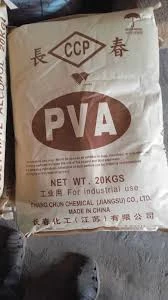Understanding Carboxymethyl Cellulose A Versatile Polymer
Carboxymethyl cellulose (CMC) is a widely used compound derived from cellulose, the most abundant organic polymer on Earth. As a cellulose derivative, CMC is formed by the chemical modification of cellulose through the substitution of some hydroxyl groups with carboxymethyl groups. This unique modification imparts a range of beneficial properties to CMC, making it an invaluable ingredient in various industries, including food, pharmaceuticals, cosmetics, and more.
One of the most significant features of CMC is its ability to act as a thickening agent. In the food industry, CMC is commonly used to enhance the texture and viscosity of products such as sauces, dressings, and ice creams. By increasing the thickness of these products, CMC not only improves mouthfeel but also helps stabilize emulsions, preventing the separation of ingredients. This stabilizing property is crucial in the production of low-fat or reduced-calorie foods, where CMC can mimic the creamy texture normally provided by fats.
Beyond its role in the food sector, CMC finds extensive application in the pharmaceutical industry. Its excellent film-forming properties are utilized in the formulation of tablets and capsules, aiding in controlled drug release. CMC functions as a binder and disintegrant, ensuring that the active ingredients are effectively delivered and absorbed by the body. Moreover, it acts as a suspending agent in liquid medications, providing uniform distribution of active compounds.
carboxymethyl cellulose

In the cosmetic industry, CMC serves as a multifunctional ingredient in various products, from creams and lotions to shampoos and conditioners. Its thickening and stabilizing properties enhance the texture and performance of these products, while also improving their shelf life. Additionally, CMC can help retain moisture in formulations, making it a valuable component in skin care products aimed at hydration.
Another remarkable property of carboxymethyl cellulose is its ability to form gels upon the addition of ions or when subjected to heat
. This gel-forming capability has enabled its use in a variety of applications, including food gels, hydrogel dressings for wounds, and various biotechnological applications. The ability to form gels allows for systematic release of active ingredients in drug delivery systems, enhancing therapeutic efficacy.Furthermore, CMC is biodegradable and environmentally friendly, making it an increasingly popular choice as industries seek to adopt sustainable practices. Its versatility in formulation allows manufacturers to create products that meet consumer demands while minimizing environmental impact.
In conclusion, carboxymethyl cellulose is a remarkable polymer known for its multifunctionality across diverse sectors. Its thickening, stabilizing, and gel-forming properties, coupled with its biodegradability, make it indispensable in modern formulations, from food and pharmaceuticals to cosmetics. As research continues to uncover new applications, the future of CMC in various industries appears promising, solidifying its role as an essential ingredient in everyday products.
-
The Application and Significance of Construction RdpNewsMay.19,2025
-
Industrial Grade HpmcNewsMay.19,2025
-
Building Coating Adhesive Building Coating Adhesive HpmcNewsMay.19,2025
-
Application Of Hpmc For Detergent For Detergent In DetergentsNewsMay.19,2025
-
Application Of Hpmc Cellulose In Cement-Based MaterialsNewsMay.19,2025
-
Application Of High Quality Hpmc For Construction In The Field Of ConstructionNewsMay.19,2025




